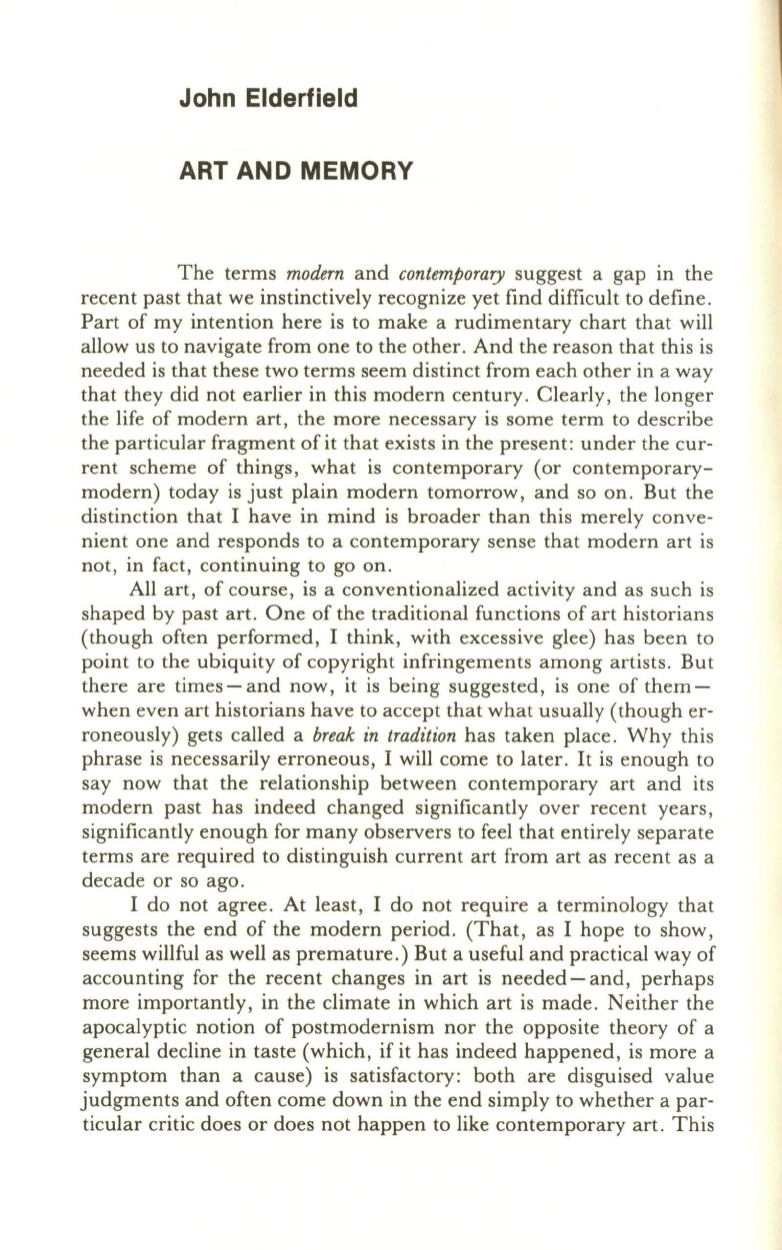
John Elderfield
ART AND MEMORY
The terms
modern
and
contemporary
suggest a gap in the
recent past that we instinctively recognize yet find difficult to define .
Part of my intention here is to make a rudimentary chart that will
allow us to navigate from one to the other. And the reason that this is
needed is that these two terms seem distinct from each other in a way
that they did not earlier in this modern century. Clearly, the longer
the life of modern art, the more necessary is some term to describe
the particular fragment of it that exists in the present: under the cur–
rent scheme of things, what is contemporary (or contemporary–
modern) today is just plain modern tomorrow, and so on . But the
distinction that I have in mind is broader than this merely conve–
nient one and responds to a contemporary sense that modern art is
not, in fact, continuing to go on.
All art, of course, is a conventionalized activity and as such is
shaped by past art. One of the traditional functions of art historians
(though often performed, I think, with excessive glee) has been to
point to the ubiquity of copyright infringements among artists. But
there are times - and now, it is being suggested, is one of them–
when even art historians have to accept that what usually (though er–
roneously) gets called a
break in tradition
has taken place. Why this
phrase is necessarily erroneous, I will come to later. It is enough to
say now that the relationship between contemporary art and its
modern past has indeed changed significantly over recent years,
significantly enough for many observers to feel that entirely separate
terms are required to distinguish current art from art as recent as a
decade or so ago.
I do not agree. At least, I do not require a terminology that
suggests the end of the modern period. (That, as I hope to show,
seems willful as well as premature.) But a useful and practical way of
accounting for the recent changes in art is needed - and, perhaps
more importantly, in the climate in which art is made. Neither the
apocalyptic notion of postmodernism nor the opposite theory of a
general decline in taste (which, if it has indeed happened, is more a
symptom than a cause) is satisfactory: both are disguised value
judgments and often come down in the end simply to whether a par–
ticular critic does or does not happen to like contemporary art. This


